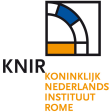Summary
- Since 2020, the Department of Humanities of Roma Tre University has carried out field seasons in the area surrounding the Montefalco castle, one of the medieval abandoned castles in the Monti Lucretili Regional Natural Park (Lazio, Italy). The activity in the sampling study area of Montefalco and its surroundings is meant to be a pilot study aiming at a wider landscape analysis. The Monti Lucretili Landscape Project (MoLuLaP) focuses on the reconstruction of the long-term landscape and settlement history, from Prehistory up to modern times, of the Monti Lucretili mountainous area NE of Tivoli (Rome). The main goal of the research project is to examine the changing patterns of economic activities affecting the landscape during time, from Prehistory up to the Modern period, including agricultural exploitation, pastoralism and transhumance practices, and their impact on the environment. The past and present perception of the local communities of their landscape is also analysed. Non-invasive surface analyses are performed first, covering selected sample areas, and they may be followed by archaeological excavation at a later stage. The involvement of the local community has already proven to be of a very high value for the research results, and it will be vital in order to achieve the ultimate goal: to provide local communities with a better consciousness of their past and of the memory values and meanings embodied in the landscape palimpsest. ............................................................................................................................... Please cite this Record as: Bernardi M., Farinetti E., 2022, Monti Lucretili Landscape Project [data-set]. Fasti Online Survey [distributor]. Permalink: https://www.fastionline.org/survey/site/AIAC_524
Project Dates
- 2020 - present
- On Montefalco castle site and its surroundings the survey methodology was based on three different fieldwork strategies: a systematic on-site survey based on total collection of pot sherds and architectural mapping (the castle area and the detected sites: MONF-S2, MONF-S4 and MONF-S5), a systematic transect based survey off-site, as well as a non-systematic survey in the forest, along the main paths still in use today, and on the hilltops and upland plateaus. On the Montefalco castle site (named MONF-S1), the systematic on-site survey methodology was based on three slightly different fieldwork strategies combining architecture and ceramic survey. First, the architectural survey of the castle structural remains was completed. Dedicated fieldwork registered a total of 27 UTs (Topographical Units), i.e. the structural archaeological evidence, photographed and documented in specific survey forms. A ceramic survey was carried out on these UTs, in the inner area of the definable structures. The limits of the survey areas are thus dependent on the shapes of the preserved structural remains, and are named S1_R_UTx (where R stands for rocca – castle, and x as progressive numbering). Second, a ceramic survey was carried out in the remaining areas of the fortified site, outside the UT structures. The survey units are named S1_Rx and were spatially defined either by joining the external corners of the visible structures/buildings (UTs), or by following the terrace walls or the line of the castle fortification, when feasible. Within the enclosure of the castle the strategy to collect ceramics according to functional areas as defined by the visible structures resulted in highly irregularly shaped survey units. Drone flights (Dji MAVIC) were performed over the site in order to better define the structural UTs and the areas in between, producing an integrated reference map which also combines data from satellite images and historical aerial photographs. Third, in the areas strictly connected to the fortified site, i.e. the structured open zones immediately outside the enclosure, survey units were similarly designed, according to the surviving structural evidence, as well as to their spatial relation with the castle enceinte. The ceramic evidence in these areas consists of dispersed material among the sporadic structural evidence such as dry-stone walls (the macere enclosures mentioned above), terrace walls, and a few rubble stone lumps (a product of the partially collapsed walls, rather than of field clearance). These may have been property boundaries of defined zones used for agricultural or pastoral activities. Since those areas are very much connected with the walled castle and can be considered a part of it, survey units were numbered after the site name, i.e. S1_x (where x stands for a progressive number). Outside the castle area and on the surrounding slopes, a systematic off-site transect based survey. Intensive-systematic surface survey standard strategies were employed, mapping transects (40 to 100m long) defined according to field boundaries, recognizable both on the base satellite images and on the ground. Surveyors walked along parallel lines at a distance of 6-10m (named TRx - where x stands for a progressive number). For each transect lane, potsherds were counted (based on a 1m wide line representative of the entire transect lane), and visibility values were registered (on a 1 to 10 scale). Density values were calculated taking into account both the visibility factor and the actually walked area in sqm.
Other Comments
- Research directors: Prof. Emeri Farinetti - Università degli Studi Roma Tre (emeri.farinetti@uniroma3.it), Prof. Riccardo Santangeli Valenzani - Università degli Studi Roma Tre; Field director: Dr. Martina Bernardi - Università degli Studi Roma Tre.
- The primary goal of the research project is to reconstruct the long-term settlement history of the area. The project also aims to investigate how economic activity patterns have changed over time, especially how transhumance, pastoralism, and agricultural exploitation have affected the environment from Prehistory to the Modern era. The past and present perception of the local communities of their landscape is also analysed.
Director
-
Director
- Prof. Emeri Farinetti - Università degli Studi Roma Tre
- Prof. Riccardo Santangeli Valenzani - Università degli Studi Roma Tre




![Edit [ed]](/survey/skins/fastisur/images/plusminus/edit.png)
![View [view]](/survey/skins/fastisur/images/plusminus/view.png)

![Download [PDF]](/survey/skins/fastisur/images/results/download_sml.png)